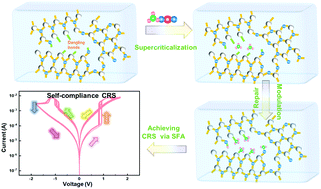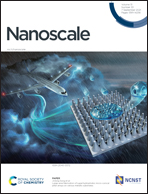Achieving complementary resistive switching and multi-bit storage goals by modulating the dual-ion reaction through supercritical fluid-assisted ammoniation
Abstract
Complementary resistive switching (CRS) is a core requirement in memristor crossbar array construction for neuromorphic computing in view of its capability to avoid the sneak path current. However, previous approaches for implementing CRS are generally based on a complex device structure design and fabrication process or a meticulous current-limiting measurement procedure. In this study, a supercritical fluid-assisted ammoniation (SFA) process is reported to achieve CRS in a single device by endowing the original ordinary switching materials with dual-ion operation. In addition to self-compliant CRS behavior, a multi-bit storage function has also been achieved through the SFA process accompanied by superior retention and reliability. These substantial evolved resistive phenomena are elucidated attentively by our chemical reaction model and physical mechanism model corroborated by the material analysis and current conduction fitting analysis results. The findings in this research present the most efficient way to achieve CRS through only one chemical procedure with significantly improved device performance. Moreover, the supercritical fluid approach envisions tremendous possibilities for further development of materials and electric devices by a low-temperature process, with semiconductor fabrication compatibility and environmental friendliness.



 Please wait while we load your content...
Please wait while we load your content...